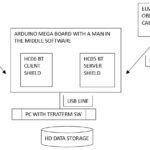While RapidScreen may seem like a convenient alternative to traditional emissions testing, its stricter standards raise questions about passing. This article explores the relationship between standalone ECUs and OBD2 emissions tests, including the RapidScreen program in Colorado.
Standalone ECUs and OBD2 Compliance
Standalone Engine Control Units (ECUs) are aftermarket systems designed to replace a vehicle’s factory ECU. They offer greater control over engine parameters for performance tuning. However, modifying a vehicle’s emissions system can impact its ability to pass OBD2 tests, including those conducted by RapidScreen. OBD2 systems monitor various components related to emissions, such as the catalytic converter, oxygen sensors, and evaporative emissions system. A standalone ECU might not properly communicate with the OBD2 system, leading to a failed test. Furthermore, tuning a vehicle for increased performance often results in richer air-fuel mixtures, potentially exceeding allowable emissions limits.
RapidScreen’s Stringent Standards
RapidScreen utilizes roadside sensors to analyze vehicle exhaust as drivers pass by. While convenient, RapidScreen employs stricter emissions limits compared to traditional testing stations. This means a vehicle that might pass at a testing station could fail RapidScreen. This discrepancy arises from RapidScreen’s need to account for potential variations in driving conditions and vehicle configurations during the brief roadside test. The stricter limits aim to ensure only truly clean vehicles are exempt from further testing. Consequently, vehicles with standalone ECUs, especially those tuned for performance, face a greater challenge passing RapidScreen.
Passing Emissions Tests with a Standalone ECU
Passing emissions tests, including RapidScreen, with a standalone ECU isn’t impossible, but requires careful consideration. Some standalone ECUs offer features specifically designed for emissions compliance. These features might include closed-loop control strategies and compatibility with OBD2 protocols. Properly configuring the standalone ECU to meet emissions standards is crucial. This often involves professional tuning and ensuring all emissions-related components are functioning correctly.
Conclusion
Using a standalone ECU can significantly impact a vehicle’s ability to pass OBD2 emissions tests, particularly programs like RapidScreen with stricter standards. Achieving compliance requires careful selection and configuration of the standalone ECU, potentially including professional tuning. If you’re considering a standalone ECU, factor in the potential challenges and costs associated with meeting emissions requirements.

